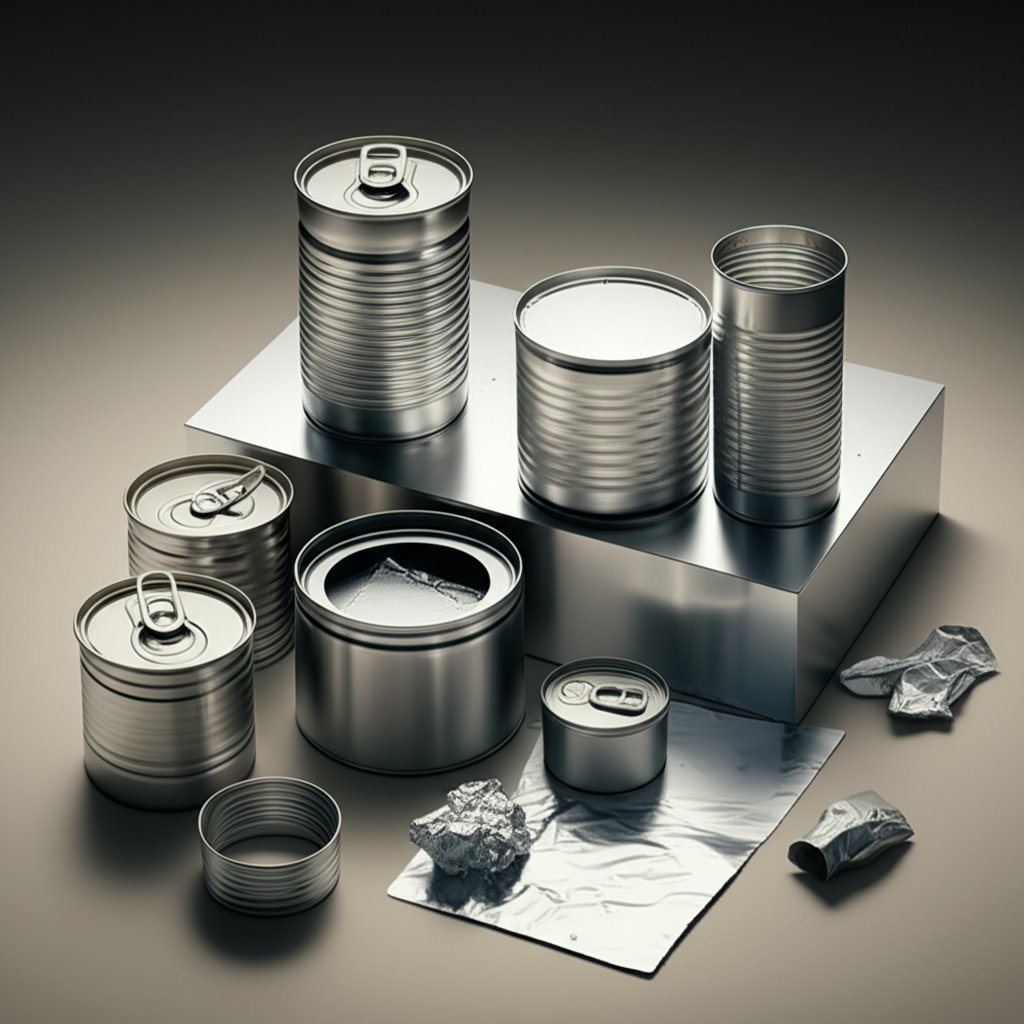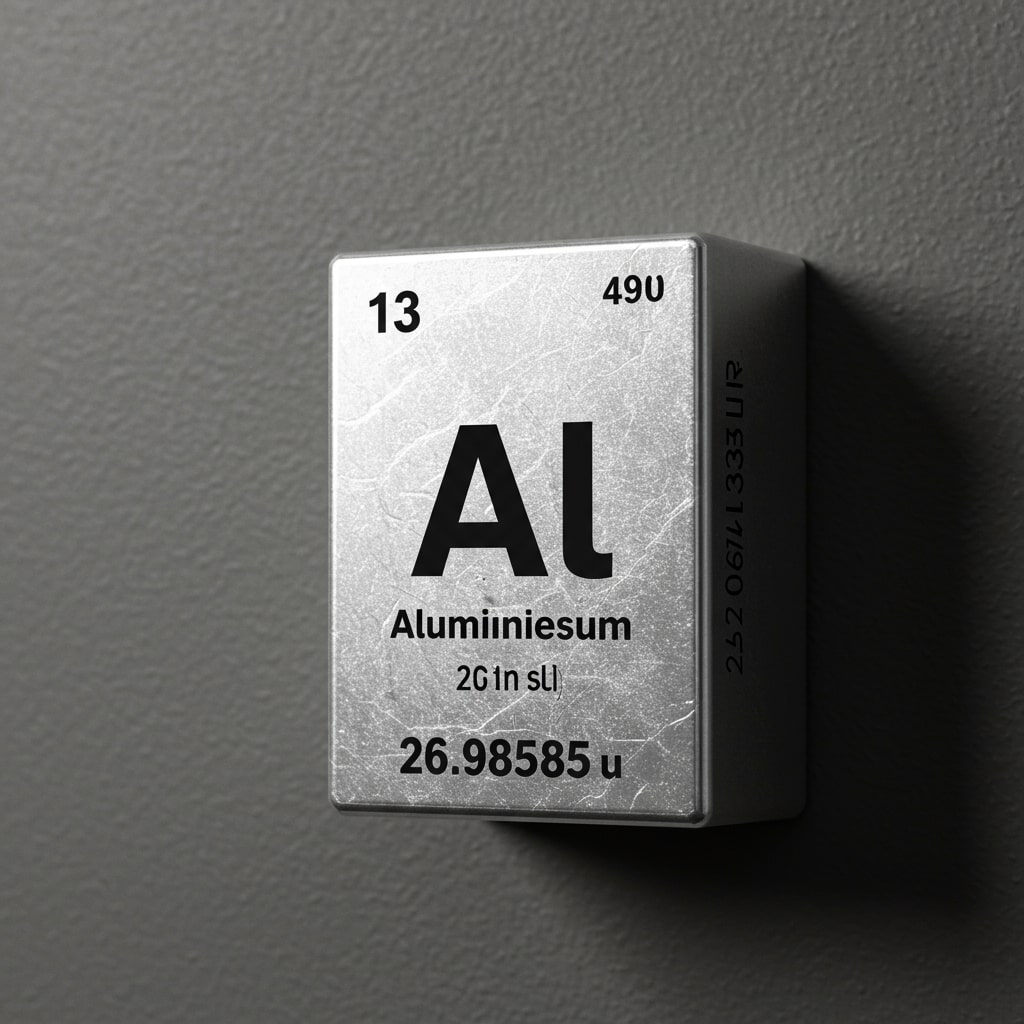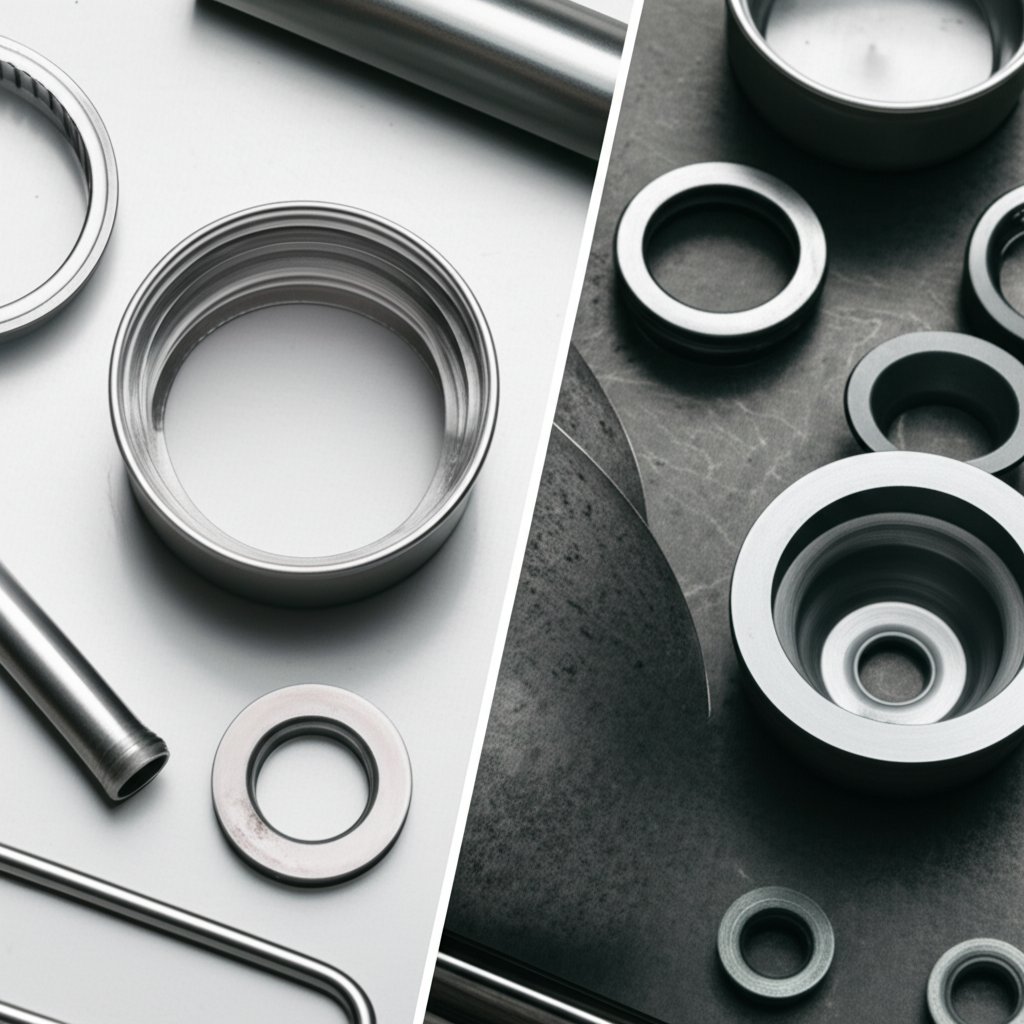
Have you ever wondered, is aluminum metal? It’s a surprisingly common question—especially given how often this silvery material appears in our everyday lives. From the foil in your kitchen drawer to the lightweight frame of your bicycle and the sleek casing of your laptop, aluminum is everywhere. Yet, confusion about its true nature persists. Why? Perhaps it’s because aluminum feels so different from heavier, more familiar metals like iron or copper, or maybe its lightweight character and silvery shine set it apart in our minds.
Understanding whether aluminum is a metal isn’t just a matter of trivia. It’s a foundational question that impacts industries, technology, and even environmental practices. Aluminum’s unique combination of lightness, strength, and resistance to corrosion makes it one of the most widely used materials in the world. You’ll find it in:
So, why does it matter if aluminum is a metal? Knowing its classification helps us understand its properties—like why it’s so lightweight, how it resists rust, and why it’s so easy to recycle. These characteristics have practical implications for everything from energy efficiency in buildings to fuel economy in vehicles and sustainability in manufacturing (source).
In this article, we’ll answer the core question—is aluminum metal—and dive into what sets it apart. We’ll explore its scientific classification, key properties, and why it’s become such an essential material in both industry and daily life. By the end, you’ll have a clear, expert-backed understanding of aluminum’s true nature and why it matters to you.

Let’s settle the question: is aluminum a metal? The answer is a resounding yes. Aluminum is, without a doubt, a metal—one that stands out for its versatility, abundance, and unique set of properties that shape our everyday lives and global industries. But what makes aluminum a metal, and how is it classified among the elements? Let’s break it down.
If you’ve ever glanced at a periodic table, you’ll notice aluminum listed with the symbol Al and atomic number 13. It sits in Group 13 (IIIA), nestled between boron and gallium. Unlike transition metals (Groups 3–12), aluminum is classified as a post-transition metal. This means it exhibits classic metallic behavior but with some unique traits compared to the d-block elements. Its electron configuration is [Ne] 3s2 3p1, and it typically forms a +3 oxidation state—hallmarks of Group 13 elements (source).
Some confusion arises because aluminum is lightweight and corrosion-resistant, qualities that sometimes lead people to wonder, is aluminum a metalloid? However, as explained in the comprehensive guide by Shengxin Aluminum, aluminum consistently behaves as a true metal, not a metalloid or nonmetal. You can find a detailed breakdown here: Is Aluminum a Metal? Unveiling the Truth Behind This Versatile Element.
Metals share several defining characteristics. To understand what metal is aluminum, consider these classic metallic traits:
Aluminum checks all these boxes. Its combination of lightness and strength is so remarkable that it’s used in everything from airplanes to packaging, as detailed in this Royal Society of Chemistry profile. Even though pure aluminum is soft, alloying it with other elements boosts its strength, making it adaptable for countless applications.
So, why do some people still ask, is aluminum metal? The confusion often comes from its lightweight feel and resistance to rust—traits that seem unusual for metals. But these are precisely the qualities that make aluminum so valuable. Unlike iron, which rusts, aluminum forms a protective oxide layer that prevents further corrosion. And while it’s lighter than many metals, it never loses its fundamental metallic identity.
In summary, aluminum is not just a metal—it’s one of the most important and widely used metals on Earth. Its unique blend of properties sets the stage for deeper exploration into how it compares to nonmetals and metalloids, which we’ll tackle next.
Ever found yourself wondering, is aluminum metal or nonmetal? Or maybe you’ve heard someone ask, is aluminum a metal or metalloid? These questions pop up often, especially since aluminum sits right next to the so-called “stair-step” line on the periodic table—a region known for blurring the lines between metals, nonmetals, and metalloids. Let’s break down these categories and see exactly where aluminum fits.
First, it helps to know what defines each group. Imagine you’re looking at the periodic table. Elements are grouped based on their shared properties, but the boundaries aren’t always crystal clear. Here’s a quick comparison to help you visualize the differences:
| Category | Typical Properties | Examples |
|---|---|---|
| Metals |
|
Aluminum, iron, copper |
| Nonmetals |
|
Oxygen, sulfur, carbon |
| Metalloids |
|
Silicon, boron, arsenic |
Here’s where it gets interesting. On the periodic table, metalloids form a zigzag line separating metals and nonmetals. Elements like silicon and boron are classic metalloids—they have a mix of metallic and nonmetallic traits. For example, silicon is shiny like a metal but brittle like a nonmetal, and it conducts electricity moderately well (which is why it’s used in electronics) (source).
Aluminum, however, is a different story. While it borders the metalloid line on the periodic table, experts agree that its properties are overwhelmingly metallic. According to CK-12, aluminum is considered a metal because all of its properties are like those of metals—not metalloids or nonmetals. It’s not just about location on the table; it’s about how the element behaves.
Let’s look at the facts. When you ask, is aluminum metal or metalloid, consider these standout features:
Compare this to metalloids, which are typically brittle and only moderate conductors. Aluminum is neither brittle nor a semiconductor—it’s tough, flexible, and highly conductive.
Why do some people still wonder if aluminum is a metalloid or nonmetal? The confusion often comes from its position on the periodic table and its lightweight feel. But don’t let that fool you—aluminum’s properties are a textbook case of what it means to be a metal.
In summary, aluminum is firmly a metal—not a nonmetal, not a metalloid. Its conductive, malleable, and lustrous nature puts it squarely in the metal category. Understanding this distinction helps clear up any lingering doubts and sets the stage for exploring other unique aspects of aluminum in the next section, such as its classification as a non-ferrous metal.

When you hear the terms "ferrous" and "non-ferrous," you might wonder: is aluminum a non ferrous metal or is aluminum a ferrous metal? The answer lies in the basic chemistry of metals and their iron content. Let’s break it down in straightforward terms.
Ferrous metals are those that contain iron as a primary component. Think of classic materials like steel, cast iron, and wrought iron. These metals are known for their strength, durability, and magnetic properties. However, they’re also prone to rust when exposed to moisture because iron oxidizes easily (source). That’s why you often see ferrous metals in construction, automotive frames, and heavy machinery.
Non-ferrous metals, on the other hand, contain little to no iron. This simple difference gives them some standout advantages:
Examples of non-ferrous metals include aluminum, copper, lead, zinc, and precious metals like gold and silver (source).
So, is aluminum non ferrous metal? Absolutely. Aluminum does not contain iron as a primary ingredient, which means it isn’t magnetic and won’t rust the way iron-based metals do. These qualities make aluminum especially valuable for applications that demand resistance to corrosion and a lightweight profile—think airplanes, cars, boats, and even beverage cans (source).
In summary, aluminum’s lack of iron content, combined with its corrosion resistance, malleability, and low density, firmly places it in the non-ferrous category. Understanding this distinction not only answers the question but also highlights why aluminum is so widely used in industries where weight, durability, and longevity matter most. Next, we’ll explore how this non-ferrous status affects aluminum’s interaction with magnets and further shapes its applications in modern technology.
Have you ever tried sticking a magnet to a soda can or a sheet of aluminum foil and noticed nothing happens? This leads many to wonder: is aluminum a magnetic metal? The answer isn’t as straightforward as you might think, and understanding the science behind it can help clear up a lot of everyday confusion.
Let’s start with the basics. Aluminum is not magnetic in the way that iron or steel is. In scientific terms, it’s not ferromagnetic—which means it doesn’t have the strong, permanent magnetic properties you see in metals like iron, nickel, or cobalt. Instead, aluminum is classified as paramagnetic. This means it is only very weakly attracted to strong magnetic fields, and this attraction is so slight that it’s virtually undetectable in daily life (source).
So, when you ask, "aluminum is a magnetic metal?"—the practical answer is no. Under normal conditions, a magnet will not stick to aluminum or make it move.
The secret lies in aluminum’s atomic structure. Aluminum has unpaired electrons, which allow it to respond weakly to a magnetic field. But unlike ferromagnetic materials, the electrons in aluminum don’t align in a way that creates a strong, lasting magnetic effect. When a magnet is brought close, aluminum’s atoms align ever-so-slightly with the magnetic field, but as soon as the magnet is taken away, everything snaps back to normal—no lingering magnetism (source).
Even when exposed to powerful magnets, the force is so minimal that you won’t notice it in typical household or industrial settings. In fact, the only way to observe this weak attraction is with sensitive scientific equipment or under extreme laboratory conditions (reference).
Sometimes, aluminum is mixed with other metals to form alloys for added strength or durability. If these added elements are themselves magnetic (like iron or nickel), the alloy may show slightly more magnetic behavior. However, pure aluminum—and most commercial aluminum alloys—remain non-magnetic for all practical purposes.
Aluminum’s non-magnetic nature is actually a huge advantage in many fields. It’s used in electronics to prevent magnetic interference, in medical devices like MRI machines where magnetism can be dangerous, and in aerospace for components that must not affect navigation instruments.
In summary, while aluminum is technically a magnetic metal in the paramagnetic sense, it is so weakly magnetic that it behaves as non-magnetic in real life. This unique property makes it invaluable in technology, medicine, and construction—especially when magnetic neutrality is a must. Up next, we’ll explore how aluminum’s lightweight nature further sets it apart from other metals.

When you pick up a soda can or feel the frame of a modern bicycle, you might notice how surprisingly light they are. That’s the magic of aluminum—and it all comes down to two defining traits: density and weight. But what exactly is the density of aluminum metal, and why is it so important in the world of engineering, design, and everyday life?
Density is a measure of how much mass is packed into a given volume. For aluminum, this number is consistently cited as approximately 2.7 grams per cubic centimeter (g/cm³) or 2,700 kilograms per cubic meter (kg/m³) (source). To put this in perspective, steel—a common construction metal—has a density of about 7.85 g/cm³. That means aluminum is roughly one-third the weight of steel for the same volume.
This low density is not just a scientific curiosity—it’s a game-changer for industries where every gram counts.
With its feather-light feel, it’s clear that aluminum is not considered a heavy metal. In scientific and industrial terms, “heavy metals” typically refer to elements with much higher densities, such as lead, mercury, or even iron. Aluminum’s low density disqualifies it from this group, and that’s a good thing: it makes aluminum easier to transport, shape, and use in weight-sensitive applications.
| Metal | Density (g/cm³) | Classification |
|---|---|---|
| Aluminum | 2.7 | Lightweight metal |
| Steel | 7.85 | Heavy metal |
| Lead | 11.34 | Heavy metal |
| Copper | 8.96 | Heavy metal |
Imagine you’re designing an airplane, a high-speed train, or even a skyscraper. The lighter the materials, the easier it is to:
That’s why aluminum is a favorite in:
It’s not just about being light—aluminum also delivers impressive strength, especially when alloyed with other elements. This unique combination allows engineers to design products that are both sturdy and easy to handle. For example, modern aircraft can contain up to 90% aluminum alloys in their structure, maximizing performance while minimizing weight (source).
Aluminum’s low density and high strength-to-weight ratio make it indispensable in applications where reducing weight is critical for efficiency and safety.
For projects where weight, strength, and reliability are non-negotiable, choosing a supplier with deep expertise in aluminum profiles is essential. Shengxin Aluminum specializes in delivering high-quality, precisely engineered aluminum profiles tailored for demanding applications—from transportation to advanced construction projects. Their commitment to performance and structural reliability ensures your designs achieve optimal results, every time.
Next, let’s explore how aluminum’s position on the periodic table further defines its unique place among metals.
If you’ve ever wondered, is aluminum a transition metal, you’re not alone. The periodic table can look intimidating, and the names of its groups sometimes add to the confusion. Let’s clear things up by exploring where aluminum fits—and why its classification matters for understanding its properties and uses.
Transition metals occupy the central block of the periodic table (Groups 3–12). These elements are known for their variable oxidation states, high melting points, and strong metallic bonding. They often form colorful compounds and are prized for their ability to act as catalysts in chemical reactions. Examples include iron, copper, nickel, and chromium.
Aluminum, with the symbol Al and atomic number 13, sits in Group 13—also known as the boron family. Unlike transition metals, aluminum is classified as a post-transition metal (sometimes called a "poor metal"). This distinction is more than just a label; it reflects fundamental differences in electron configuration and chemical behavior. Aluminum’s electron configuration is [Ne] 3s2 3p1, which means it lacks the partially filled d-orbitals that define true transition metals (reference).
Here’s a simple comparison to help you see how aluminum stands apart:
| Property |
Transition Metals (e.g., Iron, Copper) |
Post-Transition Metals (e.g., Aluminum) |
|---|---|---|
| Periodic Table Location | Groups 3–12 (d-block) | Groups 13–16 (p-block) |
| Electron Configuration | Partially filled d-orbitals | No d-orbital electrons in outer shell |
| Oxidation States | Variable (often 2+ or 3+) | Usually single (Al: +3) |
| Physical Properties | Hard, high melting points, strong metallic bonding | Softer, lower melting points, more covalent bonding |
| Common Uses | Construction, electronics, catalysts | Packaging, transportation, lightweight structures |
Some people mistakenly assume aluminum is a transition metal because of its metallic appearance and widespread use. However, its chemistry tells a different story. Aluminum:
These features firmly place aluminum in the post-transition metal category. In fact, the term "post-transition metal" is used to describe elements in the p-block (Groups 13–16) that have metallic properties but don’t share the full suite of characteristics found in transition metals (reference).
Aluminum’s position in Group 13 is more than just a spot on the chart—it shapes its entire chemical identity. Group 13 elements (boron, aluminum, gallium, indium, thallium) share a valence electron configuration of ns2np1, leading to similar chemical behaviors. For aluminum, this means a preference for forming compounds in the +3 oxidation state and exhibiting high reactivity, especially in its pure form (reference).
Understanding that aluminum is a post-transition metal—not a transition metal—helps explain its unique blend of lightness, strength, and resistance to corrosion. These traits are key to its vital roles in modern engineering, packaging, and transportation. Next, let’s put this knowledge into practice by learning how to identify aluminum in everyday objects.

Ever wondered how to tell if metal is aluminum when sorting through kitchen drawers or working on a DIY project? It’s a common question—especially since aluminum’s silvery appearance can look a lot like other metals, such as steel or even tin. But with a few simple tests and some keen observation, you can confidently identify aluminum in everyday objects, from soda cans to window frames and, of course, that familiar roll of aluminum foil.
Sounds complex? It’s actually easier than you might think. Here’s a quick guide to help you spot aluminum using sight, touch, and basic household tools:
When you reach for that shiny roll in your kitchen, you might wonder, is aluminum foil metal? The answer is yes—aluminum foil is made from high-purity aluminum metal, typically containing 92–99% aluminum. It’s prized for being lightweight, flexible, and resistant to oil and chemicals, making it a staple for food storage, cooking, and even electronics (reference).
Other common aluminum items include:
Sometimes, distinguishing between aluminum and other metals—especially different alloys—requires advanced tools or professional expertise. Techniques like X-ray fluorescence (XRF) analysis or Optical Emission Spectroscopy (OES) can provide precise identification, but for most household and workshop scenarios, the tests above will do the trick (reference).
"When in doubt, remember: aluminum is light, non-magnetic, and scratches easily. These traits set it apart from most other metals you’ll encounter daily."
If your project demands more than just basic identification—such as sourcing high-quality, custom aluminum profiles for construction, transportation, or advanced manufacturing—partnering with a specialized manufacturer is key. Shengxin Aluminum offers a full spectrum of expertly engineered aluminum profiles and finishes, ensuring every technical or industrial application meets the highest standards of performance and reliability.
With these practical identification methods, you’ll be able to spot aluminum with confidence. Next, let’s explore the value of aluminum scrap metal and what factors influence its worth in today’s market.
Ever wondered how much is aluminum scrap metal worth when you’re collecting cans or clearing out old window frames? The answer is more nuanced than you might think. Aluminum’s high recyclability makes it a valuable resource in both environmental and economic terms. But the actual price you get for your aluminum scrap depends on several key factors—let’s break them down.
Just like any other commodity, the value of aluminum scrap metal is shaped by a combination of quality, quantity, and market conditions. Here’s what you should keep in mind before heading to the scrap yard:
So, how much is aluminum scrap metal per pound? Rates can vary by region and scrap yard, but as of May 2025, typical prices for aluminum scrap in the U.S. range from $0.45 to $0.60 per pound, depending on type and location (see iScrap App for recent rates). Clean, sorted scrap brings the highest prices, while dirty or mixed-metal loads receive less.
Recycling aluminum isn’t just about making extra cash—it’s a powerful way to help the planet. Aluminum can be recycled indefinitely with no loss of quality, and the process saves up to 95% of the energy required to produce new aluminum from raw ore (source). This massive energy savings reduces greenhouse gas emissions and conserves natural resources. In fact, Americans throw away hundreds of millions of dollars’ worth of aluminum each year, money that could be recaptured through recycling.
In summary, the worth of aluminum scrap metal goes far beyond the price per pound. By recycling, you not only earn money but also contribute to a more sustainable, energy-efficient future. Next, we’ll wrap up by highlighting aluminum’s essential role in industry and daily life—and why understanding its true nature is so important.
When you step back and consider all the evidence, the answer to “is aluminum metal” is clear and compelling. Throughout this article, we’ve explored aluminum’s scientific classification, its unique blend of properties, and the reasons it stands apart as a lightweight, non-ferrous metal. From its placement in Group 13 of the periodic table to its high electrical conductivity, corrosion resistance, and low density, aluminum consistently proves itself as a truly versatile material.
Understanding aluminum’s true nature isn’t just an academic exercise—it’s a practical guide for making smarter choices in design, construction, manufacturing, and recycling. Whether you’re a homeowner, engineer, or business leader, recognizing what makes aluminum special can help you leverage its strengths for better results.
For those with technical or large-scale project needs, partnering with an expert manufacturer ensures you get the most out of this remarkable metal. Shengxin Aluminum stands out as a trusted provider of high-quality, precisely engineered aluminum profiles, supporting innovation and reliability across industries. By choosing the right materials and partners, you can unlock aluminum’s full potential—today and into the future.
Aluminum is a pure chemical element with the symbol Al and atomic number 13. It is not a mixture but a true metal, recognized for its silvery-white appearance, lightweight nature, and high conductivity. As the most abundant metal in Earth's crust, aluminum consistently exhibits all the defining traits of metals, including malleability, ductility, and metallic luster.
True. Aluminum is definitively a metal. Its atoms form a face-centered cubic crystal structure, and it displays classic metallic properties such as electrical conductivity, malleability, and a shiny surface. Aluminum's classification as a metal is universally accepted in science and industry.
No, aluminum is not a transition metal. It is classified as a post-transition metal in Group 13 of the periodic table. Unlike transition metals, aluminum does not have partially filled d-orbitals and typically forms only a +3 oxidation state. Its unique position gives it distinct properties, including light weight and high corrosion resistance.
You can identify aluminum by its light weight, non-magnetic nature, and silvery-gray appearance. Aluminum is much lighter than steel or iron, does not attract magnets, and scratches easily. Common items like soda cans and kitchen foil are usually made of aluminum. For technical identification, advanced tools or professional analysis may be used.
Aluminum is considered a non-ferrous metal because it contains little to no iron. This gives it excellent resistance to corrosion, makes it non-magnetic, and contributes to its light weight. Non-ferrous metals like aluminum are favored for applications where durability, conductivity, and low weight are essential.
 serviço on-line
serviço on-line 0086 136 3563 2360
0086 136 3563 2360 sales@sxalu.com
sales@sxalu.com +86 136 3563 2360
+86 136 3563 2360